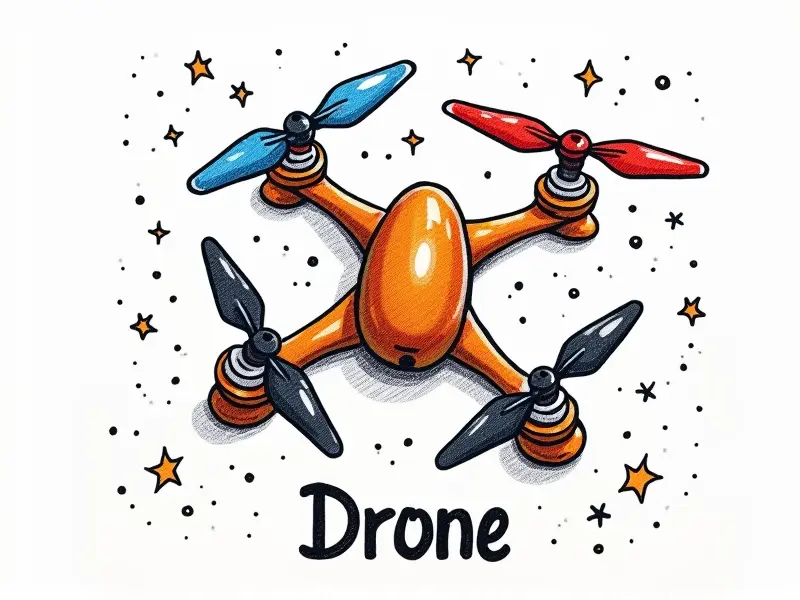What is VTX in FPV?

What Is VTX in FPV Drone Tech?
VTX, or Video Transmitter, plays a crucial role in First Person View (FPV) drone technology. It transmits the video feed from your FPV camera to your goggles or monitor, allowing you to see what your drone sees in real-time. This technology enhances the immersive experience and control of FPV drones.
Understanding VTX in FPV Racing
In the competitive world of FPV racing, a high-quality VTX is essential for delivering clear video signals. Pilots rely on crisp images to navigate through tight courses at breakneck speeds. A reliable VTX ensures that you can see every detail and react swiftly to maintain control.
Why VTX Matters for FPV Pilots
- Enhanced Visibility: High-quality video transmission allows pilots to spot obstacles and make split-second decisions.
- Better Control: Clear video signals provide better situational awareness, enabling precise maneuvering of the drone.
- Competitive Edge: In racing scenarios, a superior VTX can mean the difference between winning and losing.
Exploring VTX Options for FPV
The market offers various types of VTXs, each with unique features tailored to different needs. Here are some popular options:
- Broadband VTX: These transmitters offer a wide frequency range and high power output.
- Narrow Band VTX: Ideal for specific frequency bands, providing better signal clarity in crowded environments.
- Switchable VTX: Allows pilots to switch between different frequencies without changing hardware.
How VTX Affects FPV Video Quality
The quality of your video feed directly impacts the overall FPV experience. Key factors include:
- Resolution and Frame Rate: Higher resolution and frame rates provide smoother, more detailed visuals.
- Signal Interference: Stronger signals reduce interference from other devices and improve video clarity.
- Transmission Distance: The range of your VTX determines how far you can fly while maintaining a clear feed.
Choosing the Right VTX for FPV
Selecting the right VTX depends on several factors, including your flying style and environment. Consider the following:
- Purpose: Racing, freestyle, or recreational flying?
- Budget: High-end models offer better performance but come at a higher cost.
- Frequency Band: Choose the right band based on your location and local regulations.
VTX Basics for New FPV Enthusiasts
If you're new to FPV, understanding VTX basics is crucial. Start by familiarizing yourself with:
- Fundamentals: Learn about power output, frequency bands, and modulation types.
- Compatibility: Ensure your VTX works seamlessly with other components like cameras and receivers.
- Troubleshooting: Know how to identify common issues and fix them quickly.
The Role of VTX in FPV Systems
A well-integrated VTX is vital for a cohesive FPV system. It works alongside other components such as cameras, antennas, and receivers to deliver an optimal viewing experience. Proper setup and calibration are essential for maximizing performance.
Maximizing Your FPV Experience with VTX
To get the most out of your VTX, follow these tips:
- Optimize Settings: Adjust power levels and frequency settings based on your flying environment.
- Select Quality Components: Use high-quality antennas and receivers for better signal integrity.
- Maintain Equipment: Regularly check and clean components to ensure optimal performance.
VTX Explained: Key Features & Benefits
A good VTX offers several advantages, including:
- High Power Output: Ensures strong signals over long distances.
- Versatile Frequency Bands: Allows flexibility in choosing the best band for your area.
- User-Friendly Setup: Easy to install and configure, even for beginners.
VTX Setup Guide for Beginners
Finding the right setup can be daunting. Here’s a step-by-step guide:
- Select Your VTX: Choose based on your flying style and budget.
- Install Components: Connect your VTX to the camera, antenna, and power source.
- Tune Settings: Adjust power levels and frequency settings for optimal performance.
Conclusion
The Video Transmitter (VTX) is a critical component in FPV drone technology. Whether you're an enthusiast or a professional racer, selecting the right VTX can significantly enhance your flying experience. By understanding its role and optimizing your setup, you can enjoy clearer video feeds, better control, and more immersive flights.

